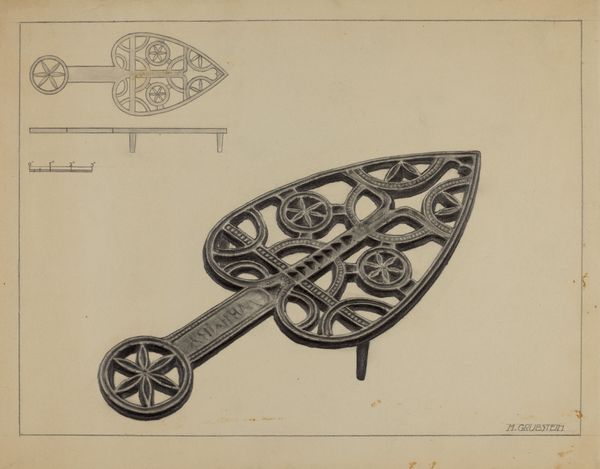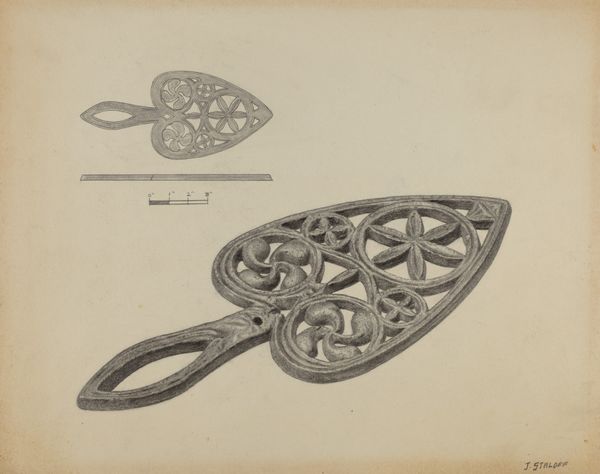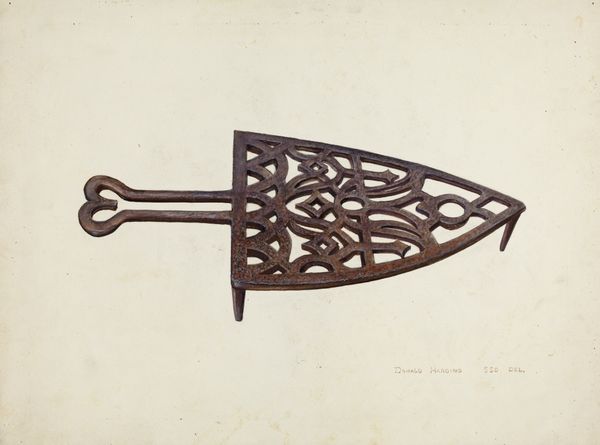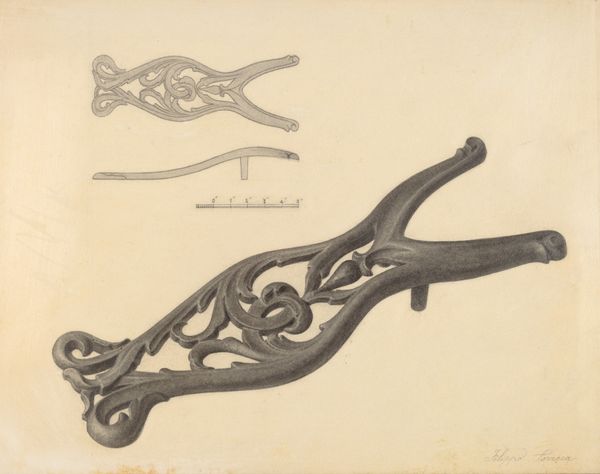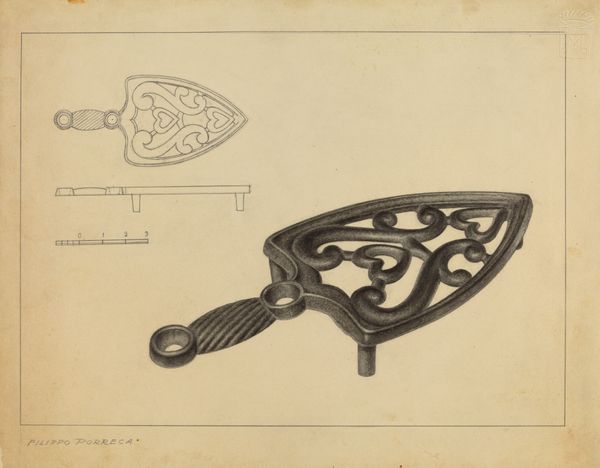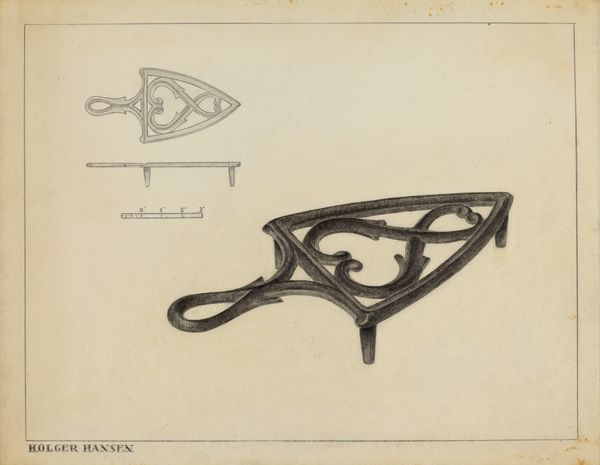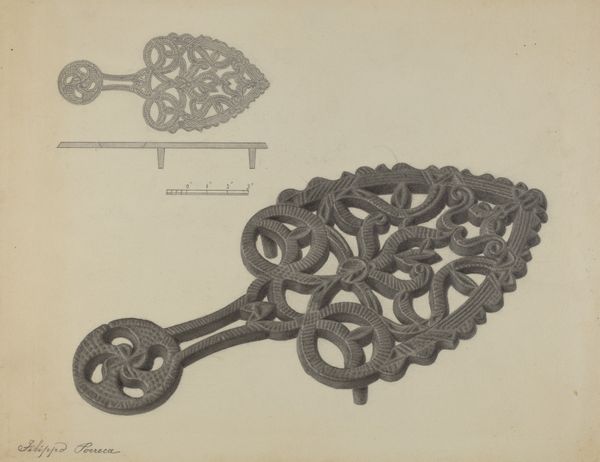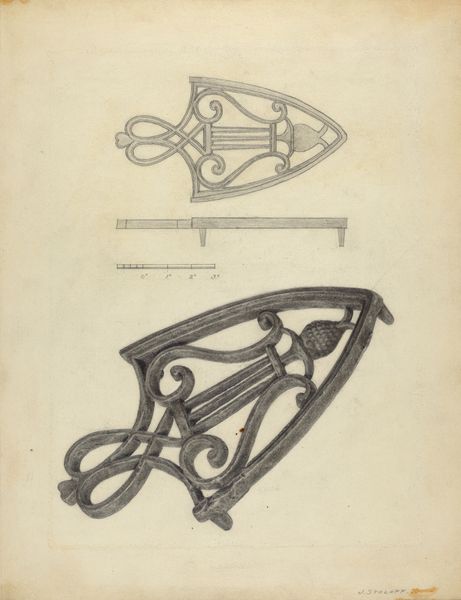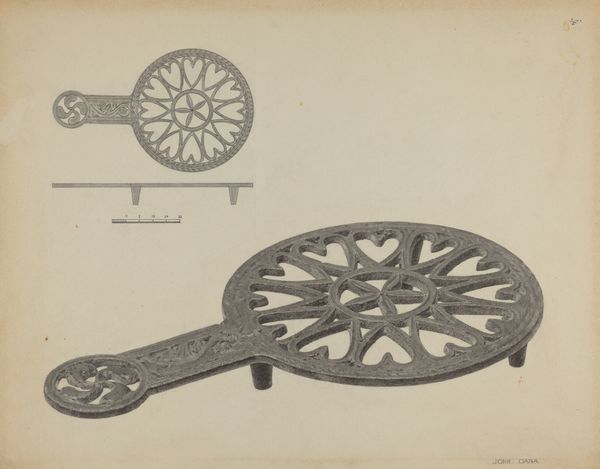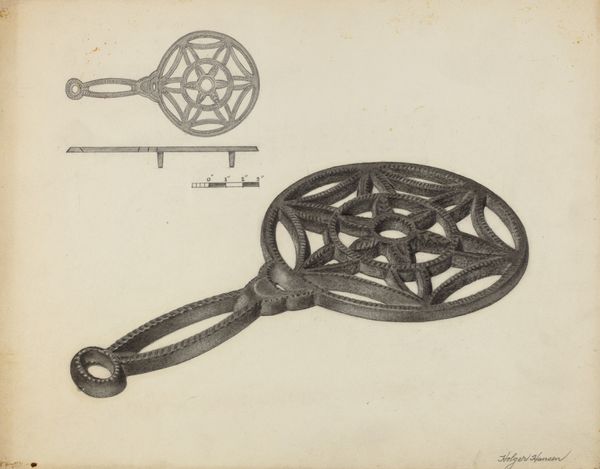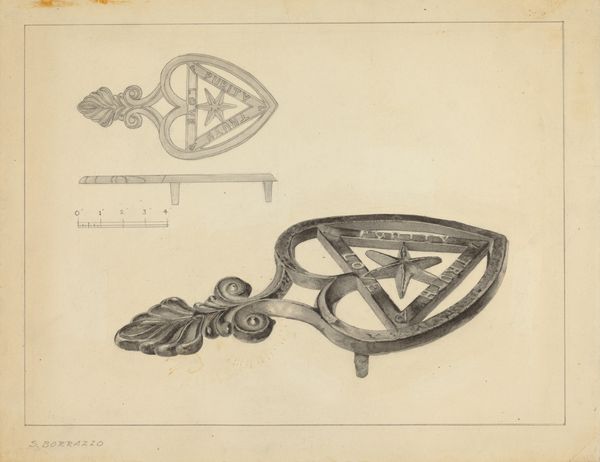
drawing, paper, pencil
#
drawing
#
paper
#
pencil
#
academic-art
Dimensions: overall: 22.7 x 28.4 cm (8 15/16 x 11 3/16 in.) Original IAD Object: 7 7/16" long; 3 11/16" wide
Copyright: National Gallery of Art: CC0 1.0
Editor: Here we have Charles Garjian's pencil drawing on paper, "Flat Iron Holder," circa 1939. It’s surprisingly detailed for such a mundane object! I'm curious, what's your take on it? Curator: It's fascinating how Garjian elevates this everyday item through meticulous academic art style. It makes you wonder about the social role of art during the period. Editor: Social role? Could you elaborate? Curator: Absolutely! In the late 1930s, what purpose did creating art of common objects like a flat iron holder serve? Was it meant to document a disappearing technology? Perhaps it reflects a wider impulse to catalogue American ingenuity, fitting into projects sponsored by the WPA’s Federal Art Project? Editor: That's an interesting point! I hadn’t considered its potential historical value as a document. But the delicate floral design feels contradictory for a utilitarian object, no? Curator: Exactly! That juxtaposition is key. It speaks to the tensions between industrial production and the desire for beauty in everyday life. Also, the choice of representing this specific design of flat iron holder and not a more simple or "modern" one. We can see the politics of imagery, showing particular aesthetics and values of the society during the time. Editor: So you're suggesting it reflects both a sense of nostalgia for traditional craftsmanship and a negotiation with burgeoning modernism? Curator: Precisely! And remember, drawings like this could serve as models for mass production, potentially influencing the design and aesthetic of manufactured goods accessible to a broader public. Editor: That reframes my whole understanding. I went from thinking of this as a simple drawing to recognizing it as a cultural artifact with complex social implications. Thanks for pointing all that out. Curator: My pleasure! Seeing art as a product of its time, shaped by institutions and social forces, can reveal so much more than just aesthetic value.
Comments
No comments
Be the first to comment and join the conversation on the ultimate creative platform.
